[ad_1]
Potty training can be a really challenging process for new puppy owners. However, what makes it much easier is incorporating yummy puppy treats like turkey or peanut butter.
Have you been wondering how long you should give your dog treats every time he follows your potty instructions?
Giving treats to your pooch is positive reinforcement training that can really help them pick up a skill. However, I recommend you should stop giving food treats after about one year of potty training. Read on to find out why.
Why Would You Give Treats?
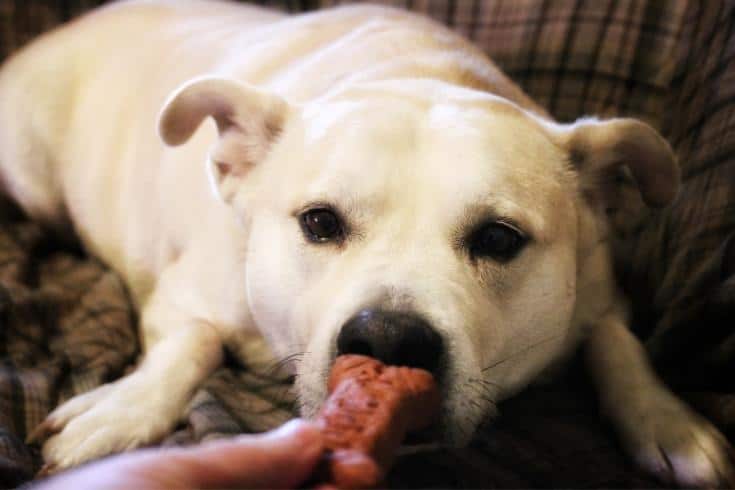

So, why should pet owners give treats in the first place?
As I’m sure there was a period of time in your psychology class, you learned about Pavlov’s bell. Pavlov’s bell is a famous experiment in which they conditioned a dog to associate the sound of a bell with food. The dog learned that when they hear the bell, they’re going to get a treat.
This is called classical conditioning, and it’s the same principle that we use when we train our dogs with treats. Every time we give our dogs a treat, we’re conditioning them to associate that treat with good behavior. So, the next time they do something we want them to do, they’ll be more likely to do it if they know they’ll get a treat.
When Should I Wean Off of Puppy Treats?
There are a couple of different schools of thought on using treats for potty training. Some people believe you should give your puppy a treat every single time they go potty in the right place, especially when you first start potty training them.
This method can be effective, but it can also lead to your puppy becoming overweight or expecting a treat every time they relieve themselves (which isn’t realistic or sustainable in the long run).
Others believe you should phase out treats for potty training once your puppy has learned where they’re supposed to go potty. This method takes longer, but it can be more effective in the long term because it teaches your puppy that they don’t always get a treat for going potty. Instead, they learn to do it because it’s the right thing to do and it makes them easier to train even if you’re at work.
So, which method is right for you and your puppy? There’s no straightforward answer, and ultimately it’s up to you to decide what works best for your individual situation.
However, we recommend starting with treats and then slowly phasing them out as your puppy learns where they’re supposed to go. This will help them learn quickly while still teaching them that going potty isn’t always about getting a treat.
Pros of Treats
Dogs Love Treats (Duh!)
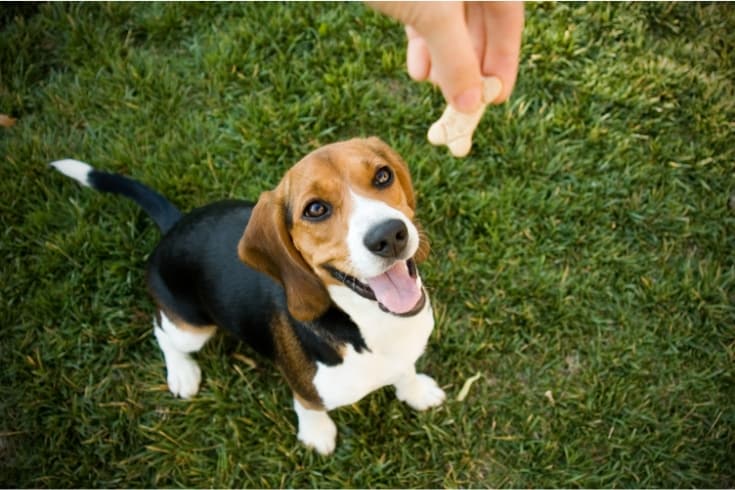

Let’s face it; dogs love food. Like, really love food. So they’ll be more motivated to perform if there’s a delicious treat waiting for them at the end of a successful trick. Besides, who doesn’t love to see their pup’s tail wag with excitement when they know a treat is coming their way?
Treats Make Training More Fun
Training sessions can sometimes be long and tedious, especially if your dog isn’t particularly food-motivated. Introducing treats into the mix can make the entire process more fun for both you and your pup. After all, learning should be enjoyable for everyone involved!
They’re an Effective Reward
When used correctly, treats can be an extremely effective way to reward good behavior. Dogs are highly intelligent creatures, and they quickly learn that performing certain behaviors will cause a tasty food reward to appear!
This positive reinforcement will help your dog understand what you expect from them and make them more likely to repeat the desired behavior in the future.
Cons of Treats
They Can Be Distracting
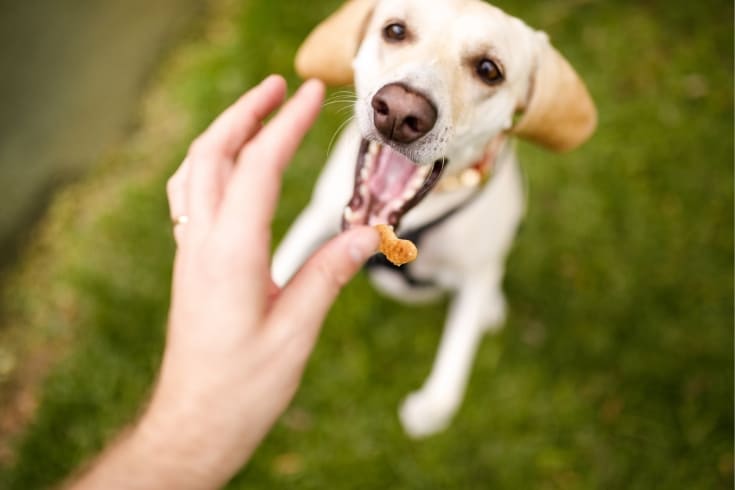

Although treats can motivate, they can also distract—especially if your dog is more interested in eating than listening to you. If my pup is constantly begging for food during training sessions, it’s going to be tough to get them to focus on anything else. In these cases, it’s often best to save the treats for after the training session is over.
They Might Cause Behavior Problems Later On
If you’re constantly rewarding your dog with food treats, they may expect a treat every time they perform a trick—even if it’s something they already know how to do. This can lead to spoiled behavior and may even make your dog less likely to listen when there are no treats around. So be sure to use them sparingly!
Your Dog May Become Overweight
Like people, dogs can also suffer from obesity if they consume too many calories. And since they load most commercial dog treats with sugar and other unhealthy ingredients, it’s important to limit how many your pup eats each day—even if they are healthy weight-loss treats designed specifically for dogs.
A good rule of thumb is to give them only 10% of their daily food intake in treat form.
How to Wean Off Treats/Alternatives to Puppy Treats
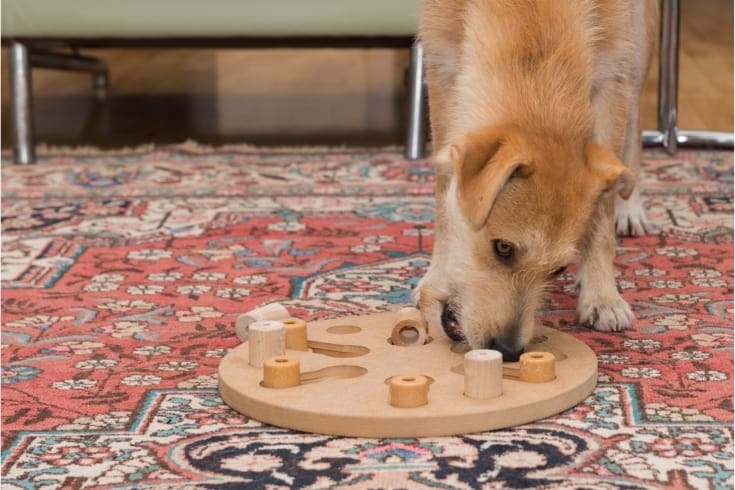

Let’s face it; we all love to give our dogs treats. They’re so cute, and they deserve it, right? I know I do. But sometimes, we can go overboard. If you give your dog a treat every time they sit, shake, or lay down, it might be time to wean them off the treats a bit. Let me tell you how:
- Introduce new activities. Dogs love variety, so try adding in some new activities that don’t involve treats. Try playing fetch or a game of tug-of-war instead of giving a treat every time they perform a trick.
- Change up your routine. If you always give your dog a treat after their walk, try changing things up and giving them a treat before the walk instead. This will help them associate the walk with something other than getting a treat.
- Give them smaller treats. Instead of giving your dog a large treat every time they do something good, try breaking the treat into smaller pieces, so they don’t expect such a big reward every time.
- Delay their treats. When your dog does something good, wait a few seconds before giving them the treat. This will help them learn they don’t always get the treats immediately and that they need to be patient.
- Alternate between treats and petting/praise. Instead of giving your dog a treat every single time they do something good, alternate between treats and petting or praise. This will help them realize we can still reward them for excellent behavior without getting a treat every time.
Now, I’m all for giving my dog healthy snacks. But there are some days when I just don’t have the time to cut up a carrot or apple into tiny pieces. That’s where these nine alternatives to dog treats come in handy. They’re all quick and easy, and best of all, your pup will love them just as much as (if not more than) traditional treats.
Some alternatives to training treats can be:
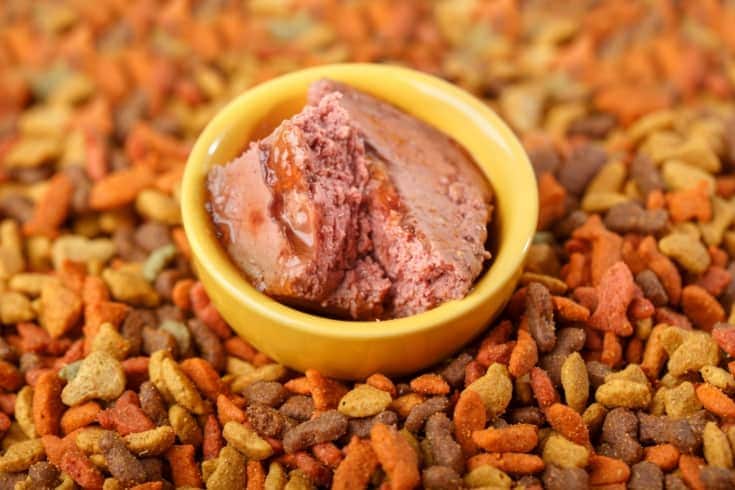

- A few pieces of regular dog food from your dog’s food bowl. Kibble is basically just dried-up bits of meat and vegetables, so it’s tasty and nutritious.
- A handful of dry Cheerios cereal. Cheerios are low in calories and fat, and they’re an excellent source of fiber. Plus, they’re so light and airy that they won’t fill your pup up too much before mealtime.
- A piece of cooked chicken breast or lean steak. Just make sure it’s cooled completely before giving it to your dog, as hot meat can burn their mouths.
- A hard-boiled egg (minus the shell). Eggs are packed with protein and other nutrients that are good for your dog’s health. Just be careful not to feed them too many, as they can cause an upset stomach if eaten in large quantities.
- A few slices of fresh apple or pear (with the seeds and core removed). These fruits are low in calories but high in fiber, which is good for digestion. And bonus points if you can get your pup to eat them with their peel on, as that’s where most of the nutrients are found.
- A carrot or green beans (cooked or raw). These veggies are great for dogs who need to lose a few pounds, as they’re low in calories but high in fiber. They’re also good for cleaning teeth and massaging gums.
- A small spoonful of natural peanut butter (with no sugar or xylitol added). Peanut butter is a significant source of protein and healthy fats, plus it’s super tasty! Just make sure you choose a brand that doesn’t contain any sugar, xylitol, or salt, as those ingredients can be harmful to dogs in large quantities.
- A slice of cheese or string cheese (preferably low-fat varieties like mozzarella or cheddar). Cheese is another food that’s high in protein but low in fat, making it a great snack for dogs who are watching their weight. Just be sure not to feed them too much, as some dogs are lactose intolerant and could get an upset stomach from eating cheese in large quantities.
- A small amount of cooked liver or kidney (from beef, chicken, or pork). These organs are packed with nutrients like iron and copper, which are essential for a healthy diet. However, they can also be very rich, so you shouldn’t feed your dog more than a couple of bites per week lest they get an upset stomach from all the fat and cholesterol.
Conclusion
There are a couple of different schools of thought on using treats for potty training. Some people believe you should give your puppy a treat every single time they go potty in the right place, and some simply do not.
So, which method is right for you and your puppy? There’s no simple answer, and ultimately it’s up to you to decide what works best for your individual situation. However, we recommend starting with treats and then slowly phasing them out as your puppy learns where they are supposed to go.
This will help them learn quickly while still teaching them that going potty isn’t always about getting a treat.
[ad_2]
Source link
